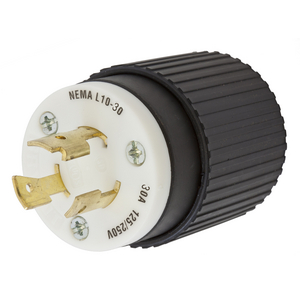lgxg
Well-Known Member
Hi everyone. I’m hoping I’ve got this about 70% figured out, but wanted to check in with some electrical geniuses here! 
I had a new garage built, knew I needed/wanted a 220v and a GFI breaker for a BIAB/single vessel and my harbor freight mig welder. When the electrician installed it in the 100 amp panel (hot tub, car charger, and 220 circuit mentioned above) he put a 30 amp GFI in it. The receptacle that was installed is a dryer outlet (NEMA 14-30).
I bought an anvil foundry on Craigslist and am about to do the 220 conversion using a 20amp 110v receptacle, some wire and a 220v plug. I bought a plug that will work with the 14-30 receptacle. I am following this guide: where he uses this 30 amp 220v plug: Leviton 30/50 Amp 2-Pole/3-Way Grounded Angle Straight Blade Plug, Black-R50-00931-000 - The Home Depot
My welder has a different type of plug that looks like it will go into the dryer outlet and seems to be a NEMA 6-50. It seems it would go into the dryer outlet NEMA 14-30 no problem, but I haven’t yet plugged it in.
From my research on all of these plug types and watching the video about the anvil conversion, I think I have learned that the 14 series plugs have a neutral that neither my welder or foundry will be using. Is this a correct assumption?
1. Can I plug my welder into the 14-30 dryer socket as is? (See picture)
2. Can I use 14-30 plug with my anvil socket? (Essentially ignoring the neutral on the plug, following the wiring as directed in the prior video - where neutral and black are wired both as hots on receptacle). Or should i use something else that doesn’t even plug into the neutral on the dryer socket - something like the plug on my welder?
Thank you!
I had a new garage built, knew I needed/wanted a 220v and a GFI breaker for a BIAB/single vessel and my harbor freight mig welder. When the electrician installed it in the 100 amp panel (hot tub, car charger, and 220 circuit mentioned above) he put a 30 amp GFI in it. The receptacle that was installed is a dryer outlet (NEMA 14-30).
I bought an anvil foundry on Craigslist and am about to do the 220 conversion using a 20amp 110v receptacle, some wire and a 220v plug. I bought a plug that will work with the 14-30 receptacle. I am following this guide: where he uses this 30 amp 220v plug: Leviton 30/50 Amp 2-Pole/3-Way Grounded Angle Straight Blade Plug, Black-R50-00931-000 - The Home Depot
My welder has a different type of plug that looks like it will go into the dryer outlet and seems to be a NEMA 6-50. It seems it would go into the dryer outlet NEMA 14-30 no problem, but I haven’t yet plugged it in.
From my research on all of these plug types and watching the video about the anvil conversion, I think I have learned that the 14 series plugs have a neutral that neither my welder or foundry will be using. Is this a correct assumption?
1. Can I plug my welder into the 14-30 dryer socket as is? (See picture)
2. Can I use 14-30 plug with my anvil socket? (Essentially ignoring the neutral on the plug, following the wiring as directed in the prior video - where neutral and black are wired both as hots on receptacle). Or should i use something else that doesn’t even plug into the neutral on the dryer socket - something like the plug on my welder?
Thank you!






